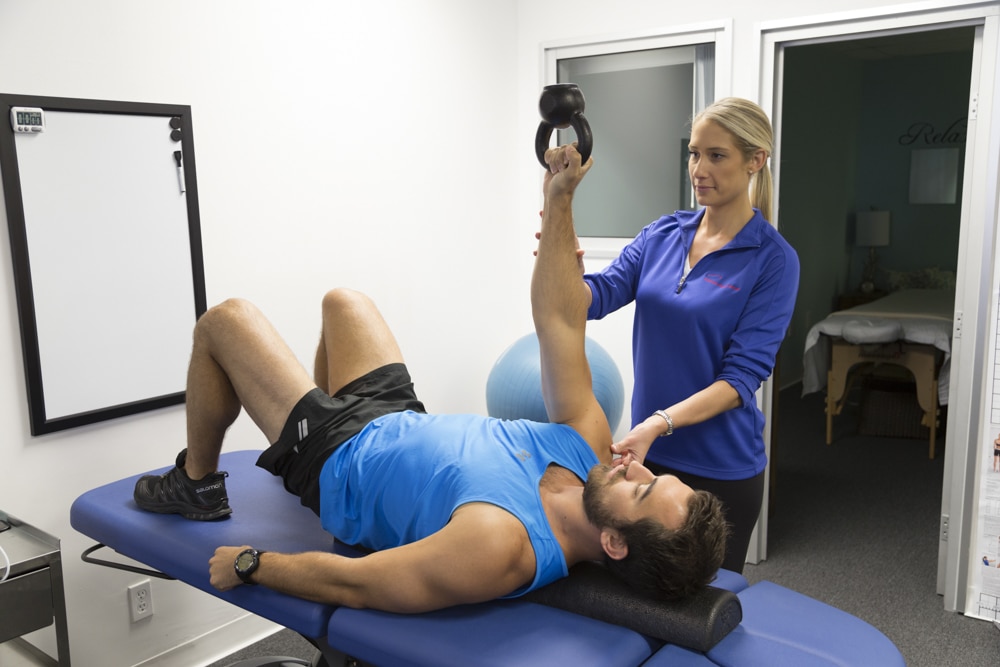Benefits of Unilateral Exercise

1.Improve Power
Unilateral exercises have a narrow base of support. This is because they are performed with one limb rather than both. Because of this, they require more neuromuscular input to maintain balanced. These exercise require a faster rate of force production (RFD) from muscles. This means that rate at which the muscles are “turned on” to do their job, can be made quicker by performing unilateral exercise.
One study even cited that rate of force production (RFD) can improve 40-60% in sub-maximal AND maximal loads! Even more fascinating than that, was that the rate of force development improved in the arm being trained (obviously), but also, equal improvements in RFD were found in the un-trained arm. How is that possible you ask? Our neurological system has the ability to send cross-over messages to the same muscle on the other side of the body. So benefits are being made even on the untrained side, when you are doing a one-sided exercise. How great is that?
Now, why not do bilateral exercises and work on both at the same time right? Well, bilateral exercise does improve RFD with increased load. This means the more weight you load the exercise with. As a result, we can get more feedback out to your muscles. While bilateral exercise also improves power output, it doesn’t do so to the extent unilateral exercise does. Also, it doesn’t lead to cross-over contributions from side to side.
2.Improve Balance
It’s obvious that unilateral exercises will challenge balance more since they have a smaller base of support. Therefore, by narrowing the base of support in these exercises we rely more heavily on vestibular and visual input, and we can train these balance mechanisms.
One article studied visual input on balance comparing bilateral and unilateral exercises. The study showed that closing your eyes in unilateral exercises results in more balance disturbances than bilateral exercises. That is because we are relying more heavily on vision when balancing during unilateral exercises. So, by minimizing two of the systems you are challenging balance much more so than you can with bilateral exercises. Therefore, unilateral exercise is a much better option.
3. Increases Muscle Building
Eccentric training is widely considered a great way to build muscle. A muscle functioning eccentrically can resist 15-30% more load. Unilateral exercises are shown to improve power. But, overall strength when used eccentrically. A recent study showed that unilateral eccentric exercise improved muscle strength on the trained limb. The neuromuscular cross-over effect to the other limb influences power output. So once again, unilateral exercises are benefitting the un-trained limb without even performing exercise on it. Therefore, you will gain bilateral strength with unilateral exercise.
Conclusion
Are you dealing with body aches related to activity or exercise? We are here to help! At Symmetry, we will provide you with a comprehensive physical therapy assessment to get to the root cause of your problem. Check out our Youtube channel for more tips and easy to follow exercises videos. Making key changes to your footwear and movement strategies can help prevent a small problem from getting worse.
